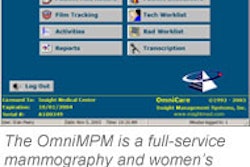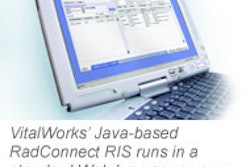Providers of teleradiology services are now seeking accreditation from the Joint Commission on Accreditation of Healthcare Organizations (JCAHO), in hopes that they’ll get more business by reducing the credentialing and privileging burdens of clients who use their services.
A modest rise in applications has been prompted by JCAHO’s announcement of a new telemedicine standard section, MS.4.120, which clarifies that hospitals receiving services from treating clinicians over a telemedicine link can credential and privilege those clinicians by proxy or reciprocity.
"What came to our attention was that a lot of organizations -- primarily rural hospitals -- were outreaching to university hospitals to provide telemedical services to them because they did not have certain specialists out in their area," said Nancy Kupka, a project director at JCAHO.
But the burden of credentialing and privileging all of the potential providers from a large academic center presented a problem for small hospitals, Kupka said.
For example, Kupka said, if a rural hospital contracted for teleradiology services from a big city group with 80 members, the rural hospital would have to perform primary-source verification of the licensure, graduation, and residency information for each of the 80 radiologists.
The new standard specifies that hospitals can use the information previously verified by a JCAHO-accredited service facility as the basis for extending privileges to the distant providers.
That clarification prompted several teleradiology entities to seek JCAHO’s stamp of approval, according to Michael Kulczycki, executive director of the ambulatory care accreditation section.
Among those applying is San Diego-based Stat Radiology, which is paying around $15,000 for an expedited JCAHO survey in February, according to Joe Moock, StatRad’s vice president of operations.
StatRad is undergoing JCAHO accreditation because it is good for our clients; smaller hospitals have limited resources for credentialing within their medical staff offices, and we'd like to help them with that burden," Moock said.Larger organizations appear better equipped to do their own credentialing, Moock said, and often want to retain control of the process. "Larger facilities may be slower to adopt this arrangement, but they will see greater competition between providers when it is easier to switch coverage."
At a teleradiology service that has already received JCAHO approval, vice president Jonathan Berger of Nighthawk Radiology Services in Coeur d'Alene, ID, has also noticed some reluctance on the part of hospitals to take advantage of the reduced credentialing burden.
"We have seen somewhat limited acceptance so far, but it’s something that’s new," Berger said. "So over time it may become more accepted."
Having the option would allow hospitals to receive Nighthawk’s services in a quicker time frame, he said.
Teleradiology service providers who want to apply for accreditation can start by visiting the ambulatory care advisor section of JCAHO’s Web site.
By Tracie L. ThompsonAuntMinnie.com staff writer
January 20, 2004
Related Reading
High-volume teleradiology brings substantial benefits, September 19, 2003
2004 JCAHO standards mix it up with patient participation, August 13, 2003
Overseas teleradiology faces legal hurdles, February 21, 2003
Imaging passage to India sparks outsourcing controversy, January 23, 2003
JCAHO expert offers troubleshooting for accreditation review, July 31, 2002
Copyright © 2004 AuntMinnie.com



















